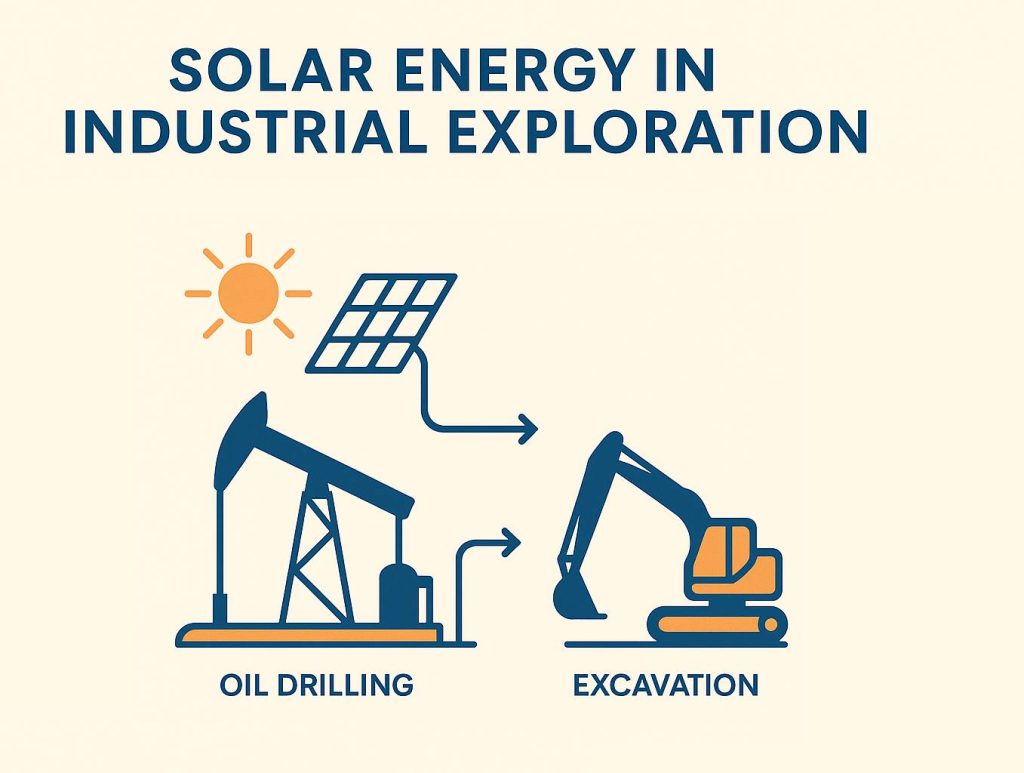
What Is a Solar Hot Water System? Solar hot water is a system that harnesses the sun’s energy to warm […]


As global energy demands continue rising amidst growing environmental concerns over the impact of conventional power, solar energy has emerged as a renewable technology harbouring immense potential to sustain human development.
Thanks to massive investments in advancing solar photovoltaics and storage solutions recently, applications harnessing the sun’s reliable, clean beams have expanded, driving widespread adoption.
Beyond greener electric grids, solar energy now powers homes, transport, industries, and critical services worldwide – even expanding to space exploration.
We will explore diverse solar energy use cases to see how they can benefit economies without sacrificing future generations’ environmental needs.
Indeed, solar technology has progressed tremendously in recent years as installation costs have plunged 82% since 2009, with rising efficiency gains.
As grids tapped more solar energy, global capacity exceeded 1,000 gigawatts in 2022, meeting nearly 4% of worldwide electricity demands through clean conversions.
With projections forecasting that solar will supply up to 20% of global power by 2030 as deployment costs sink further, solar applications continue to diversify.
Let’s examine some key ways in which solar energy benefits civilisation today.
Likely the most common solar application, rooftop solar panel systems increasingly power household appliances, devices, and lighting structures.
Converting sunlight into direct current electricity, panels connect to properties’ electrical grids seamlessly, thanks to inverters synchronising solar supply into usable alternating current.
Any excess solar energy gets fed into wider community grids through net metering programs that credit future usage.
Homeowners who use rooftop solar thus enjoy lower utility bills with reduced grid dependence. Moreover, generating electricity from clean, renewable sources cuts greenhouse gas emissions from the residential sector.
As turnkey rooftop solar installation options emerge via leasing arrangements, modern homes can access cleaner and cheaper electricity through solar panels.
Read SOLAR SAVINGS CASE STUDIES
Beyond households, solar energy scales up across commercial buildings like offices, retail chains, warehouses, and municipal structures.
Here, power needs are surging; solar roof panels suit large surface areas while off-site collective solar farms tap economies of scale, transmitting energy directly to commercial clients.
On-site generation reduces facility emissions and provides insulation from utility rate spikes via locked-in solar pricing through power purchase agreements.
Corporations like Apple, Amazon, and Walmart installed numerous renewable energy projects, cutting operating costs and burnishing sustainability commitments.
Solar energy makes commercial-scale buildings future-proof revenue drivers and environmental stewards.
Harnessing solar power extends beyond solely generating electricity, as solar thermal systems directly heat water piping or interior air.
Solar thermal panels concentrate sunlight on fluid-filled pipes and then transfer captured warmth, warming water to be used in residential applications.
Hydronic heating techniques circulate hot liquid from thermal units throughout homes, warehouses, and pools, relying on natural gas boilers historically.
New systems are substituting renewable solar thermal to cut heating bills by over 60% via abundant free beams.
Consequently, hospitals, universities, and municipalities tap into solar process heat operated smoothly by intelligent automation to maintain consistent temperatures.

Lighting consumes over 15% of global electricity, highlighting Solar’s untapped potential in improving access, costs, and emissions.
Standalone solar LED fixtures bring quality brightness to rural regions lacking grid infrastructure. Solar also increasingly powers street lighting, parking garages, and public recreation spaces, reducing municipal utility budgets through modularity and enabling staged upgrades.
Movement-triggered and adjustable brightness solar LEDs further conserve energy.
Solar lighting implements next-gen technologies like optimised energy harvesting and battery management, bringing convenience minus the carbon footprint.
Vital for nourishing civilisation, agriculture depends upon reliable irrigation systems, which solar energy now enhances.
Diesel generators historically pumped groundwater for crop and livestock needs, while solar modules were supplanted, cutting expenses substantially.
Solar PV panels withstand dusty, humid farm environments, maintaining uptime.
Specific solar irrigation implements like water wheels and pumps cater to remote plot needs, piping water more efficiently than fuel-powered units.
Solar energy desalts brackish reserves into irrigation-capable water amidst shortages. Solar-powered greenhouses also allow localised crop production year-round despite weather fluctuations.
Powering transport with renewable solar energy brings cleaner mobility options, spanning bikes, cars, boats, buses, and trains.
Smaller weight and improved economics make incorporating solar into vehicles compelling. Solar bikes, trikes, and tiny houses maximise integrations using built-in panels and wheels to generate self-charging power.
Automakers produce solar hybrid cars like the Toyota Prius, which are partially recharged through solar cells.
Commercial solar transport options include airport transporters, light rail networks, and autonomous shuttles that operate emission-free continuously without charging infrastructures.
Transport proves a major growth vertical as mobile solar efficiency keeps improving.
Solar technology enables independent, reliable electricity, uniquely suited for remote communities, temporary events, or military missions removed from reliable access points.
Miniature-scale microgrids with solar arrays, batteries, and equipment power life necessities without the hassle of connectivity logistics.
Portable folding solar panels paired with smart generators supply expeditions, humanitarian efforts, or communication hubs through adaptable wattages that meet shifting needs.
Backup batteries charged via panels provide resilient, redundant electricity that protects against outages by storing abundant rays for dark hours.
Standalone solar solutions form crucial lifelines supporting varied off-grid situations flexibly and responsively.
Heavy manufacturing industries are deemed challenging for renewable integration, given substantial, consistent power loads relative to output variability from weather-dependent sources.
However, practical hybrid approaches combining solar and supplemental generation economically supply factories, mills, and processing plants through behind-the-meter solar and microgrid solutions.
On-site solar directly powers DC appliances and lighting loads while minimising grid consumption through load-shifting advanced batteries.

Renewable adoption rose as large energy buyers secured solar and wind contracts via power purchase agreements, guaranteeing lower costs from dedicated plants in the long term.
Industrial solar mitigates volatile energy expenses and carbon footprints.
Earth’s dwindling freshwater reserves struggle to meet agricultural, industrial, and population needs as supplies tighten globally.
Solar technology powers solutions addressing escalating water scarcity through energy-efficient desalination, transforming seawater into usable drinking water.
Concentrated solar thermal plants cost-effectively generate high-temperature heat used to evaporate ocean saltwater and collect condensation affordably.
Solar PV systems also power reverse osmosis pumping demands for low-cost desalination.
Water treatment applications utilise solar electricity, running energy-intensive filtration, disinfection, and distribution while curbing plant emissions.
Solar energy technology diversifies and secures water access for communities as demands rise.
Beyond terrestrial benefits, solar energy prominently facilitates space-based science and communication capabilities. Photovoltaic cells reliably convert sunlight into electricity to power satellites and space stations.
Solar energy fuels observation instrumentation, navigation systems, and research computing cores aboard missions.
Given remote distances, carrying fuel sources proves enormously expensive compared to lightweight and abundant solar cells surrounding probes and equipment.
NASA’s Juno spacecraft currently orbits Jupiter, relying solely on three massive solar panel arrays equal to an NBA court size that generate 500 watts of power to transmit findings.
Future ambitions eyeing trajectories farther from the sun incorporate advanced high-efficiency solar technology, pushing possibilities.
As highlighted above, ongoing solar energy advances have permeated diverse sectors, interfacing with modern living, manufacturing, agriculture, transport, and space exploration realms.
Expected capacity additions are measured in gigawatts yearly and poised to accelerate, which will inevitably expand solar technology integration into pivotal infrastructure as smarter designs and economics enable adoption at mass scales.
The path to clean energy transition led by solar looks bright.